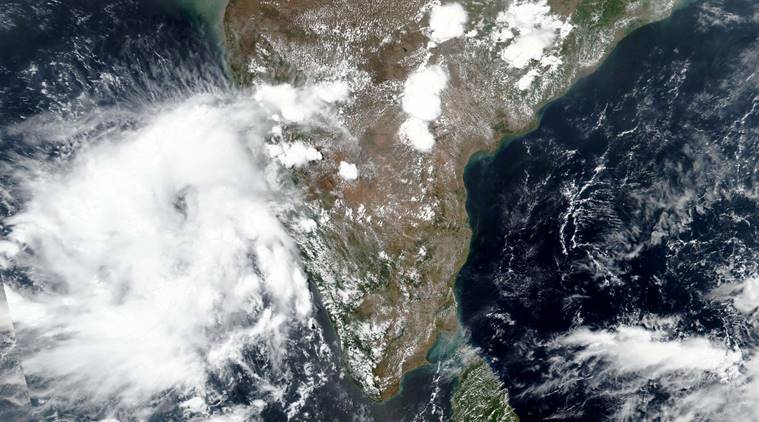 In recent years, the IMD has managed to reduce its track forecast error from 124 km in 2009-13 to 86 km in 2015-19. (PTI/Representational)
In recent years, the IMD has managed to reduce its track forecast error from 124 km in 2009-13 to 86 km in 2015-19. (PTI/Representational)
The India Meteorological Department (IMD) aims to improve its cyclone landfall point forecast error to 40 km by 2030, from the present 1,245 km, the IMD has said.
Landfall point forecast error is the distance between the place where a cyclone is expected to make landfall by weather stations, and where it actually makes landfall. Presently, in India, cyclone landfall forecasts are accurate until the storm reaches as close as 1,245 km to the coast.
“Though we have come a long way, there is still scope for improving our forecast skills. We have set before us a target of reaching cyclone landfall forecast of 40 km by 2030. With each cyclone, we learn certain lessons and these get addressed when we forecast the next cyclone,” said Mrutyunjay Mohapatra, director general, IMD.
He was speaking at an online session, ‘Cyclone: Basics, Dynamics and Prediction’, organised by the Ministry of Earth Sciences on Tuesday.
In recent years, the IMD has managed to reduce its track forecast error from 124 km in 2009-13 to 86 km in 2015-19.
Tropical cyclones are among the top three disasters in the world inflicting the highest casualties, Mohapatra said. At least 33 per cent of all hydro-meteorological disasters between 1970 and 2019 were caused by tropical cyclones, he added.
In India, more than 10,000 people were killed by Super Cyclone Odisha in 1999, one of the severest cyclones India experienced in recent decades. This event led India to aggressively invest in better cyclone forecast systems and disaster management capability.
Over the following years, the Ministry of Earth Sciences improved its meteorological services, modelling techniques and set up a cyclone warning system. By 2009, better forecast results started emerging, he said.
“In 1999, there was only one weather model relaying information once in 12 hours. But today, information is obtained from a dozen weather models, radars, buoys and satellites, helping in issuing better and accurate forecasts,” he added.
As a result, fatalities have largely remained below 100 in every cyclone that has hit Indian coats in recent years, he said.
Earlier this month, the World Meteorological Organisation lauded the IMD for its accurate forecast of Super Cyclone Amphan that hit West Bengal on May 20.
Deaths caused by some cyclones in the last decade: Cyclone Titli in 2018 (78), Cyclone Fani in 2019 (64), Cyclone Hudhud in 2014 (46), Cyclone Mekanu in 2018 (26) and Cyclone Bulbul in 2019 (25).